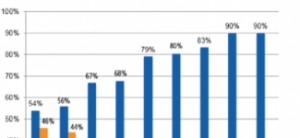Why Recruiter Training Should Be a Priority for Your Staffing Firm
Recruiter training is the foundation of a high-performing staffing firm. Great recruiters, like great professional football players, aren’t born—they are developed through ongoing coaching, training, and mentorship. A recruiting team that is well-trained, highly skilled, and equipped with the right tools is a direct asset to the firm’s profitability.
Yet, many staffing firms fail to invest in structured recruiter training. Without a standardized training program, recruiters often develop bad habits, struggle with sourcing talent, or fail to build meaningful candidate relationships.
Think of recruiter training like coaching a championship football team—you wouldn’t expect Bill Belichick to send Tom Brady onto the field without proper training and preparation, right? The same goes for recruiters. You can’t expect consistent placements and high performance without ongoing learning and professional development.

Key Steps to Building a Strong Recruiter Training Program
1️⃣ Assess Your Recruiters’ Current Knowledge & Skills
Before implementing a training program, evaluate each recruiter’s current abilities. Some may struggle with Boolean searches, while others need help with candidate engagement or interviewing techniques. Conduct a skills gap analysis to determine where training efforts should be focused.
2️⃣ Develop a Structured, Step-by-Step Training Curriculum
A successful recruiter training program must be well-documented, standardized, and scalable. Whether using traditional manuals, PowerPoints, or interactive eLearning, your program should cover all key areas of recruitment, including:
✔️ Sourcing & Boolean Search Mastery – Teach recruiters advanced search techniques to find hidden talent.
✔️ Candidate Engagement & Relationship Building – Effective communication enhances the candidate experience.
✔️ Recruitment CRM & ATS Mastery – Learning to maximize JobDiva or another ATS/CRM improves efficiency.
✔️ Interviewing, Negotiation, & Closing Strategies – Train recruiters to convert top talent and secure placements.
3️⃣ Implement Coaching & Mentorship Programs
One-time training isn’t enough. The best recruiters continuously learn and adapt to industry trends and market shifts. Establish a mentorship program where senior recruiters coach and support junior team members.
🏆 “All coaching is, is taking a player where he can’t take himself.” – Bill McCartney
4️⃣ Leverage Technology to Streamline Training
Using modern tools like JobDiva allows staffing firms to automate workflows, track performance, and measure recruiter success. Data-driven insights can pinpoint areas for improvement and help recruiters refine their strategies over time.
How Investing in Recruiter Training Drives Long-Term Profitability
Some staffing firm leaders hesitate to invest in recruiter training because they don’t see an immediate ROI. However, the financial benefits of well-trained recruiters include:
✔️ Increased Placements – More efficient sourcing and candidate engagement leads to higher conversion rates.
✔️ Lower Turnover – Recruiters feel more confident and capable, reducing attrition rates.
✔️ Improved Client Satisfaction – Trained recruiters deliver better talent, leading to stronger client relationships.
“Training is a cost center, not a disease!” – Ajay Pangarkar
If your staffing firm isn’t prioritizing recruiter training, you’re leaving money on the table and risking competitive disadvantage. Investing in ongoing recruiter development is the key to long-term growth and profitability.
🚀 Ready to Elevate Your Recruiter Training Program?
Maximize your staffing firm’s success with strategic recruiter training. Contact Recruiting Factors today to learn how our customized training solutions can help your team drive higher placements and revenue growth.
